_We may earn revenue from the products available on this page and participate in affiliate programs. Learn more ›
_
What do binocular numbers mean? may seem like a simple question. But the truth is that it can be as simple or as complicated as you want. If you’re just talking about the numbers in “10×42” or “8×32,” then, yeah, that’s pretty straightforward, and most outdoorsmen know what those mean. But what about “319’ @ 1000 yards” or “5.25 exit pupil” or “5’1” close focus”? If you don’t know what those numbers mean, then you’re not as informed as you should be when it comes to choosing the right binocular for you. So, let’s get into the numbers.
What Do Binocular Numbers Mean? A Quick Guide
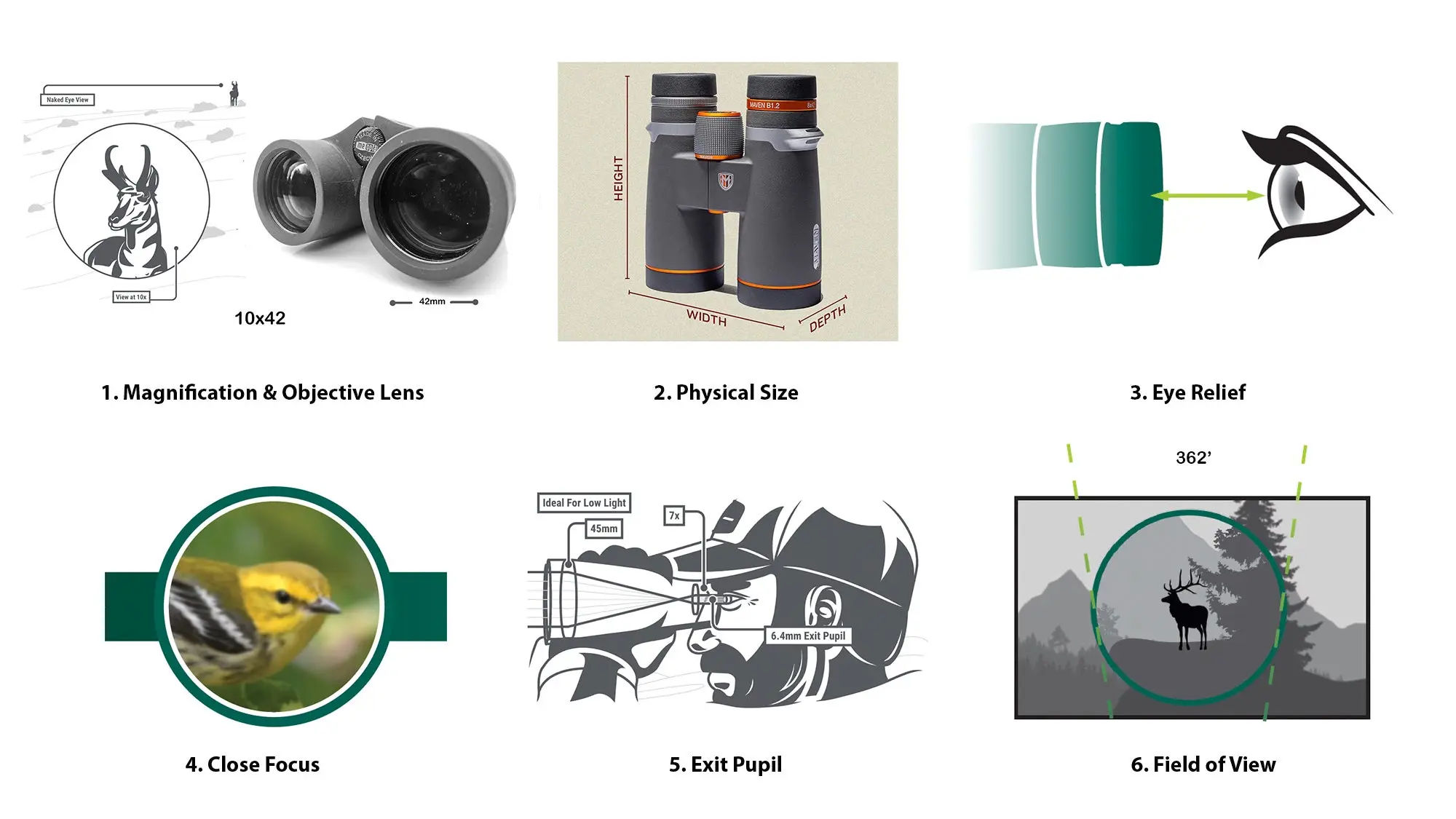
Field & Stream
If you go to almost any website that sells binoculars and click on the model you are interested in, you will get a list of specs
, which is basically a bunch of numbers. When it comes to choosing the right binoculars fo you, there are six such numbers, or sets of numbers, that you really should know. Here’s a quick and dirty rundown. We’ll dive into each in more detail below.
1. Magnification and Objective Lens Diameter
Examples: 10×42, 8×32, 15×56
What It Means: The first number is the magnification, the second is the diameter of the objective lenses (the ones farthest from your eyes) in millimeters
2. Physical Size
Example: 5.8” x 5.1” x 1.9”; 23 oz
What It Means: This refers to the binocular’s height, width, and depth, in this case in inches, as well as weight in ounces
3. Eye Relief
Example: 15.5mm
What It Means: The distance between the ocular lenses (the ones closest to you) and your eyes that allows you to get a full, clear picture
4. Close Focus
Example: 5 feet
What It Means: Any object closer than this distance cannot be brought into perfect focus
5. Exit Pupil
Example: 4.2mm
What It Means: This is simply the objective lens diameter divided by the magnification; the higher this number, the brighter the image
6. Field of View
Example: 362’ @ 1,000 yrds
What It Means: When you look through the binocular, your field of view (what you can see) in this example is 362 feet wide at 1,000 yards away.
What Do Binocular Numbers Mean? A Closer Look
1. Magnification and Objective Lens Diameter

Maven Optics / Field & Stream
These are the two most familiar binocular numbers and yet the same ones binocular newbies most often ask about. As in, What does 10×42 mean for binoculars? Or What does 12×50 mean? So, let cover this one first for anyone who is new to this. (If you’re not new to this, just skip down a bit.)
When you’re shopping for binoculars, the numbers 8×32 or 10×42 or 12×50 are always prominent in the model name because they answer the two biggest questions most anyone will have when choosing a binocular: How powerful is it? And How big is it?
The first number refers to the binocular’s magnification, and the second refers the diameter of the binocular’s objective lenses. So, a 10×42 binocular magnifies by 10x (and therefor makes things look 10 times closer), and the objective lenses are 42 millimeters wide in diameter. The higher the first number, the more powerful the binocular. The higher the second number, the bigger and bulkier the binocular will generally be, with 32mm and under classed and “compact” binoculars and 40mm and higher classed as “full-size.” Also, important for hunters, the bigger the objective lenses (all else being equal), the brighter the image.
What These Binocular Numbers Mean for You
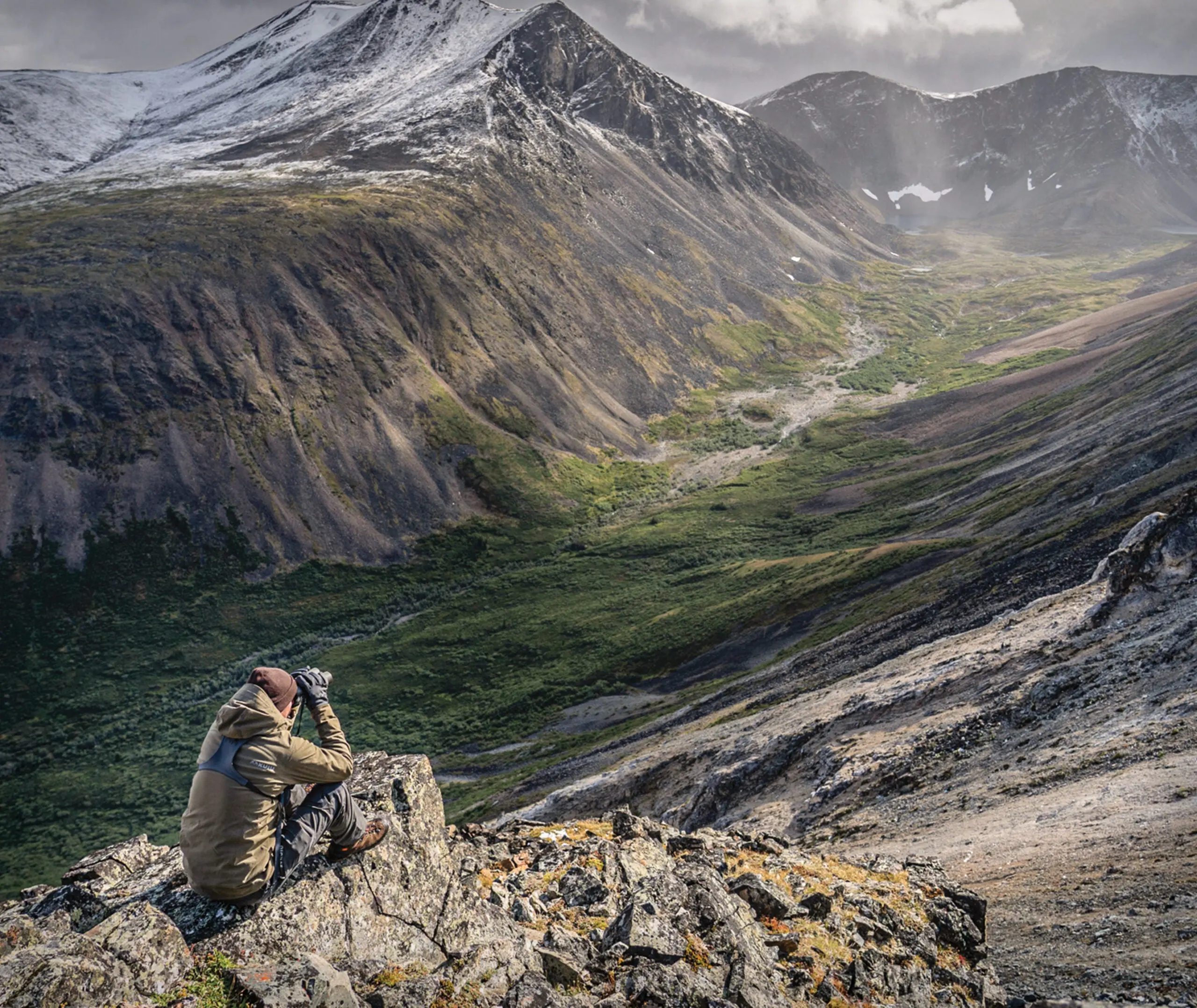
How much magnification you need depends on how far the terrain and cover allows you to see while hunting. Vortex Optics
These are the first and most important numbers to look at when choosing a binocular. If you hunt in the woods, you probably don’t need a lot of magnification and can go with a lower first number. If you hunt the wide-open West, you’ll probably want more magnification. If you’re a highly mobile woods hunter, you might want a lightweight compact model, with objective lenses of 32mm or less. If you want a binocular for the truck, you won’t care how big and heavy it is and can get great big objectives, which, as we will see, make for a brighter picture. Here’s an oversimplified breakdown for reference:
Mobile Hunting in the Woods: 6×32 to 8×32
Mobile Hunting in Mixed Habitat: 8×32 to 10×32
General Purpose: 8×40 to 10×50
Open-Country Hunting: 10×42 to 15×50, depending on what you’re willing to carry
Truck Binoculars: 12×50 to 15×56 or larger.
2. Physical Size and Weight
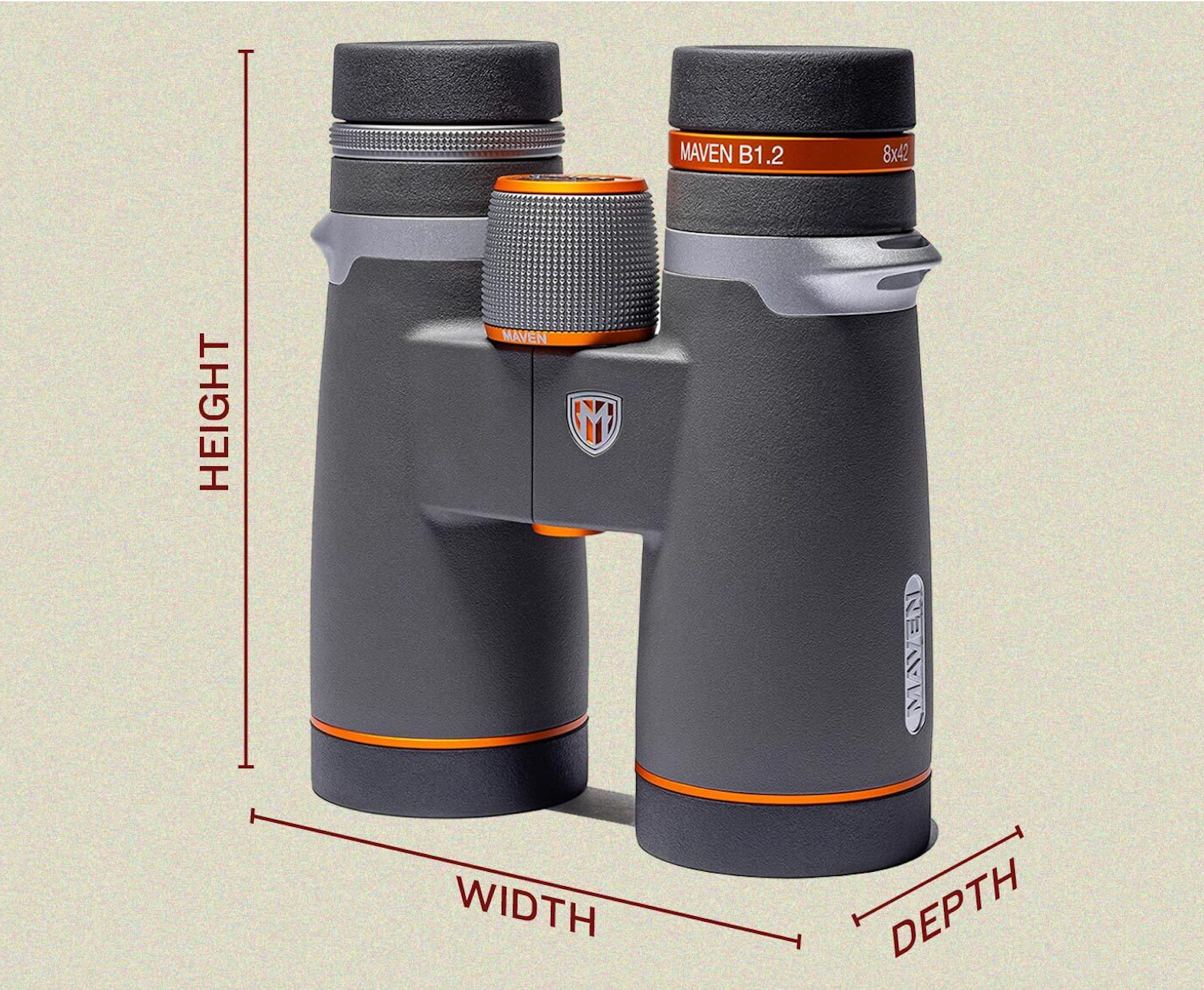
Maven Optics / Field & Stream
While the size of the objective lenses, as described above, will give you a pretty good sense of how big a binocular is, these numbers tell you that exactly. Size is typically expressed in height x width in inches, and sometime height x width x depth. Weight is usually given in ounces. So, you may see a line that reads “5.8 x 5.1 x 1.9; 23 oz.” This binocular is 5.8 inches tall when standing up, 5.1 inches wide, 1.9 inches deep (or how tall it is when lying flat), and 23 ounces in weight.
What Do These Binocular Numbers Mean for You?
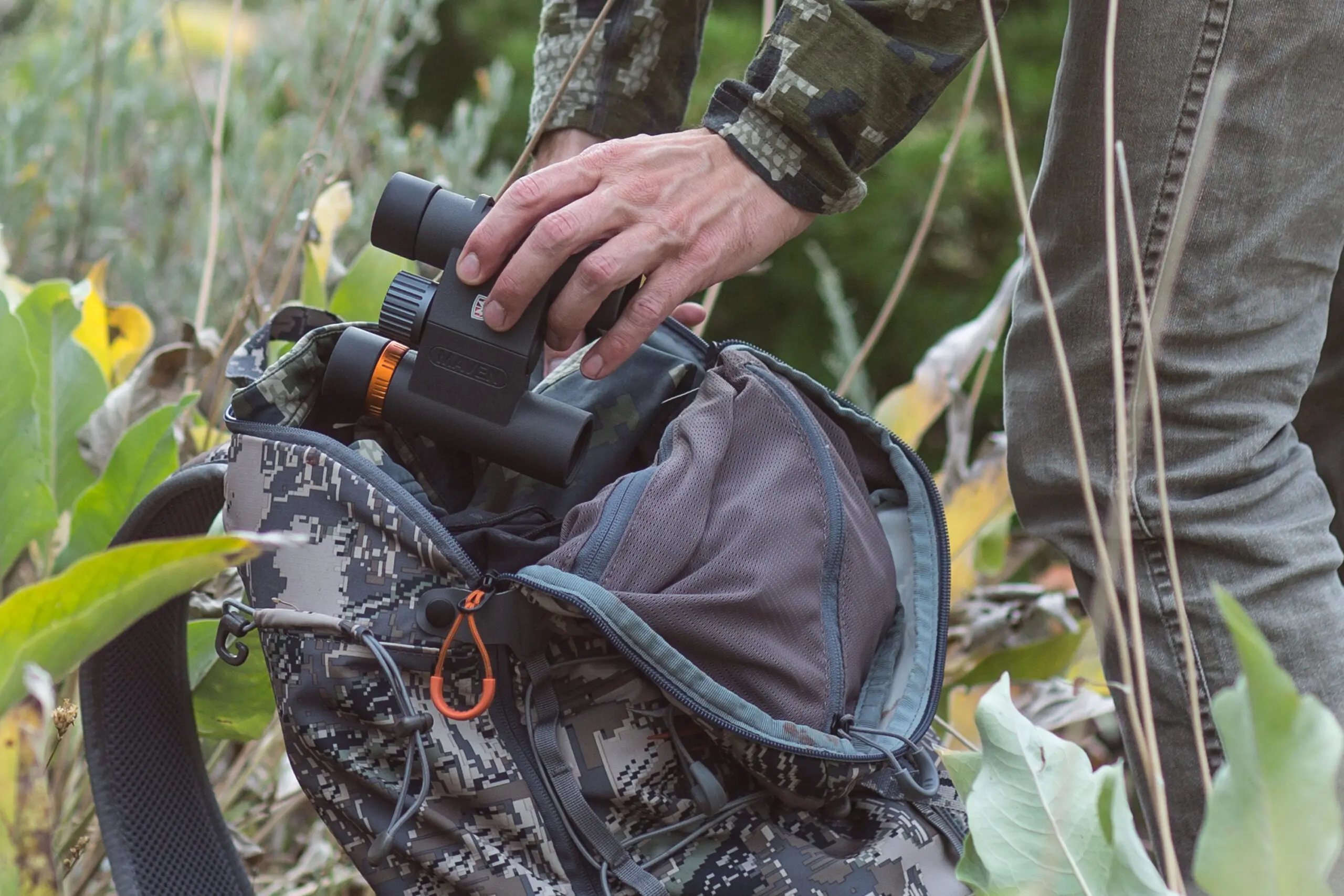
A good pair of birding binoculars have a wide field of view and are comfortable to hold.
A compact binocular is great for bow hunting, turkey hunting, and any hunting in densely wooded terrain. Maven Optics
If you want a compact binocular, look for a height of less than 5 inches and a weight of less than 18 ounces. Full-size hunting binoculars will typically have a height of 5.5 inches or more and at least 20 ounces. For mountain hunting in the West, you’ll want as compact and lightweight a binocular as possible for the given magnification. For a truck binocular, you really don’t have to worry much about size and weight.
3. Eye Relief

Vortex Optics
This number is pretty straightforward but can be an important one for some hunters. Eye relief is the distance from the binocular’s ocular lens to your eye needs to be to get the full field of view without vignetting (usually a dark ring around the image edge). Being too close or too far can obscure part of the image.
What Does This Binocular Number Mean for You?
It pretty much comes down to whether or not you wear glasses, which prevents you from getting your eye right up tight to the ocular lens. So, if you wear glasses and don’t want to have to take them off every time you look through your binocular, then you should look for a model with a comparatively long eye relief. With most of today’s quality models, you can adjust the eyecups to get the right picture, whether you wear glasses or not—but you want to be sure.
4. Close Focus
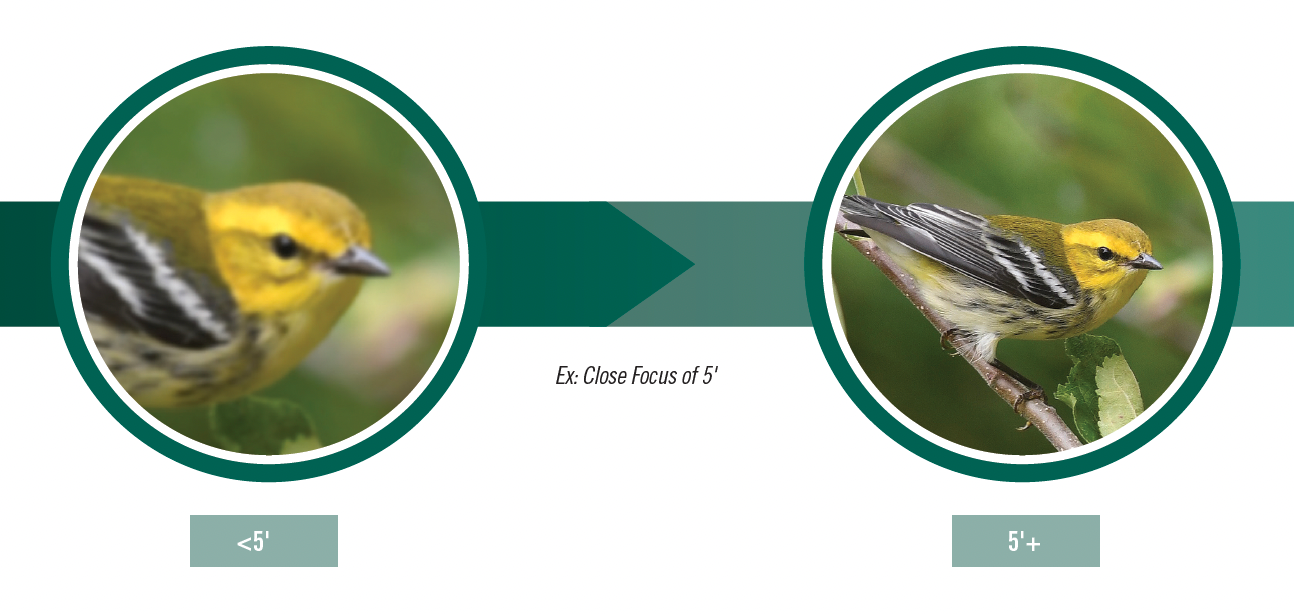
Vortex Optics
Close Focus, also called Minimum Focus Distance, is another simple one. If your binocular has a close focus distance of 5 feet, as in the example above, then any object 5 feet or more feet away can be brought into clear focus. Anything closer cannot.
What Does This Binocular Number Mean for You?
For the best birding binoculars
, it matters. For hunting binoculars, not so much. A binocular with a tight close-focus distance—say, 6 feet or less—can be really handy for folks wanting to focus on very small things, such as hummingbirds or butterflies or other insects at very close distances. But this number rarely comes into play for hunters.
5. Exit Pupil

Maven Optics
The low-light performance of a binocular is important to hunters for obvious reasons, and several factors go into it, including the number of lenses and the quality of the coatings. But the most important factor is exit pupil, which is simply the objective lens diameter divided by the magnification. So, a 10×42 binocular has an exit pupil of 4.2mm. The larger the exit pupil, the more light is allowed in and the better the binocular will perform at dawn and dusk when critters are most active.
What Does This Binocular Number Mean for You?
It means you have to make a choice. Do you want more magnification or better low-light performance? For example, if you hunt whitetail deer in wooded habitat and don’t need a lot of magnification, you might want to go with an 8×42 binocular instead of a 10×42 because it has a larger exit pupil (5.1mm compared to 4.2mm) and therefore will have better low-light performance, all else being equal.
By the same token, if you do need the magnification, you might choose to lug the extra size and weight that comes with bigger objective lenses, for the same reasons. Say, a 10×50 (5.0mm exit pupil) instead of a 10×42 (4.2mm exit pupil). And with a truck binocular you might go with a lot of magnification and huge objective lenses because the exit pupil with be larger, and you don’t care about size and weight.
6. Field of View (FOV)
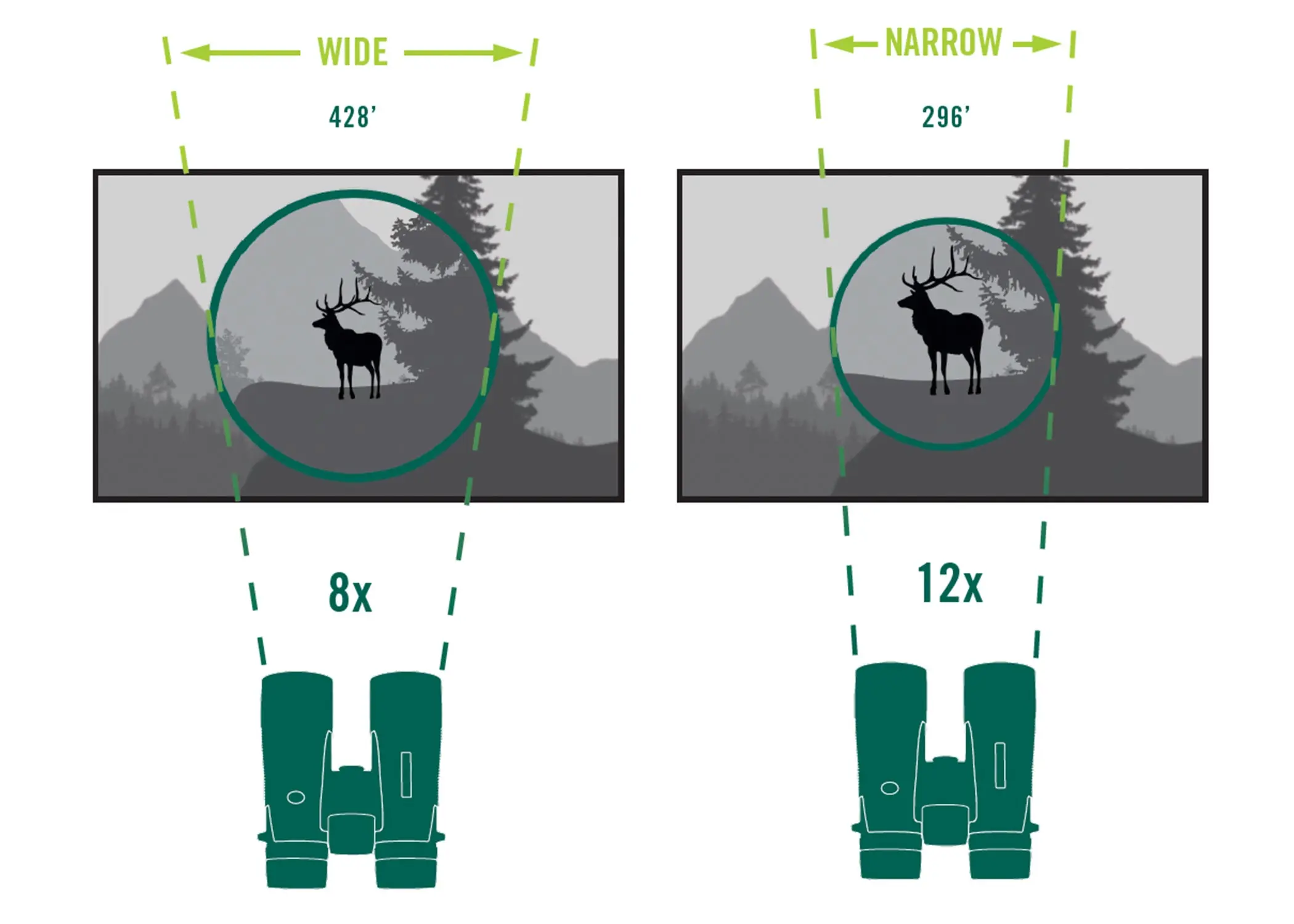
Vortex Optics
A binocular’s Field of View, or FOV, is just what it sounds like. When you look through the binocular, how big is the field you see, or how much of the world in front of you is visible through the glass, without moving the binocular. This is most often expressed as either feet or yards at 1,000 yards (or the equivalent in meters). If a binocular’s FOV is 362’ @ 1,000 yards, it means that when you look through it, your field of view is 362 feet wide at 1,000 yards away.
FOV can also be expressed as an angle, like 60 degrees, and in some ways, this is a more useful way to think of it, because FOV isn’t really a single measurement at a single distance; it’s a cone of vision that starts out very small close to the binocular and gets wider as distance increases. So while it may be 362 feet wide a 1,000 yards, it’s half that at 500, and only about 18 feet at 50 yards.
What Does This Binocular Number Mean for You?
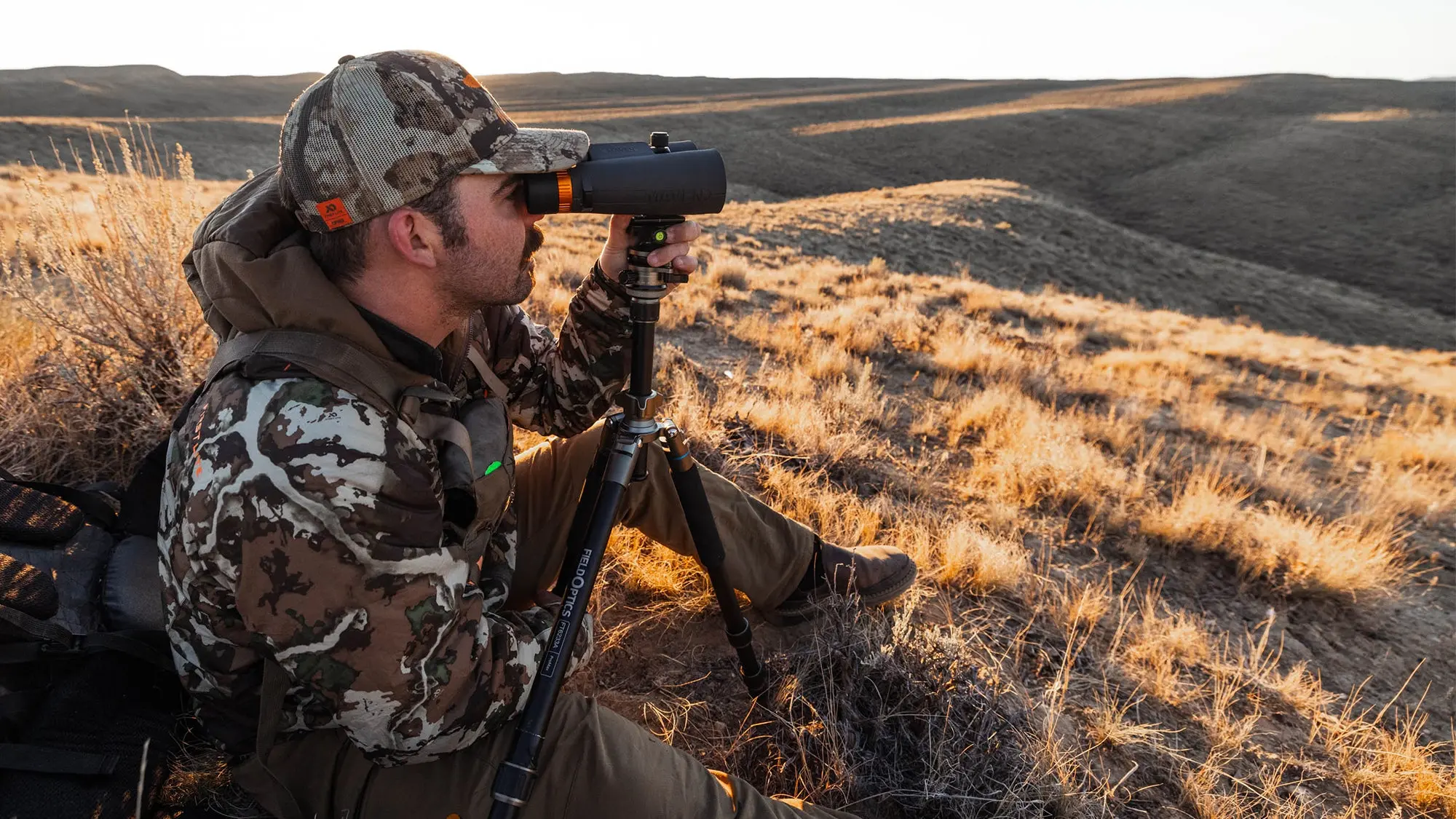
At shorter ranges in heavy cover where animals are more hidden, a wide FOV can really help. In open country, you can often choose magnification over FOV. Maven Optics
Have you ever seen a deer moving in the brush, raised your binocular to get a better look, but then couldn’t find the animal through the glass? Well, this is when you’d want a bigger field of view. Generally, the bigger the FOV, the easier it is to find what you are looking for with binoculars.
It’s ironic in a way that FOV is commonly measured at a 1,000 yards, because it’s at much closer ranges, where the cone is tighter, that FOV matters most. Birders, for example, really benefit from a large FOV because they’re trying to find tiny critters flitting about inside 50 yards or so. The same can be true for hunters, depending on the terrain and the game. When you are sniping squirrels or still-hunting deer in wooded terrain—or any time you’ll need to find a potentially moving animal at fairly close range—a large FOV can really help.
The most important factor in FOV is magnification. Lower magnification means a bigger field of view, and vice versa. Once again, like so many things, it’s a trade-off. But now that you know what all the key binocular numbers mean, you’ll know exactly what trades to make.


